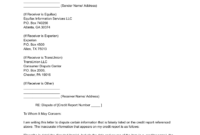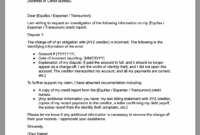Life changes, and sometimes that means needing to adjust your insurance coverage. Whether you have found a better deal with another provider, sold a property, or simply no longer require a specific policy, cancelling your insurance is a common administrative task many of us face. It might seem like a simple phone call or a few clicks online, but often, especially for significant policies, a formal written request is the best and most secure way to ensure your cancellation is processed correctly and on time.
Sending a clear and unambiguous letter helps prevent misunderstandings, ensures you have a record of your request, and can protect you from ongoing charges. This is particularly important when dealing with financial matters that directly impact your budget and legal obligations. That’s where a clear, concise cancellation letter template for insurance comes in handy, providing a structured approach to what can sometimes feel like a daunting task.
Why a Written Cancellation is Crucial for Your Insurance
When it comes to discontinuing an insurance policy, relying solely on a verbal agreement or an informal email can sometimes lead to complications. A formal written cancellation letter provides a clear, undeniable record of your intent to terminate coverage. This paper trail is invaluable should any disputes arise regarding the effective date of cancellation, potential refunds, or subsequent charges. It serves as proof that you communicated your decision to the insurer, protecting you from liability for premiums after your intended cancellation date.
There are numerous reasons why you might need to cancel an insurance policy. Perhaps you have switched car insurance providers to get a better rate, sold your home and no longer need homeowners insurance, or your life insurance needs have changed significantly. In business, a company might dissolve, requiring the cancellation of all commercial policies. Whatever the specific circumstances, the underlying need for a professional and legally sound cancellation process remains the same.
Using a well-structured letter ensures that all necessary information is conveyed to the insurance company without ambiguity. This includes your policy number, the exact date you wish the cancellation to be effective, and your contact details. Omitting any of these critical pieces of information could delay the process or, worse, lead to your policy remaining active when you thought it had been cancelled.
Furthermore, a formal letter often streamlines the refund process for any unearned premiums. Insurance companies typically require a written request to initiate such processes, ensuring they have official documentation for their records and compliance. Having a clear written record gives you peace of mind and simplifies any follow up actions you might need to take.
Key Information to Include in Your Cancellation Letter
- Policy Holder’s Full Name and Address
- The Insurance Company’s Name and Address
- Your Specific Policy Number
- The Type of Insurance Policy Being Cancelled (e.g., Auto, Home, Life)
- The Desired Effective Date of Cancellation
- A Clear Statement of Your Intent to Cancel
- Your Signature
- Your Current Contact Information (phone number, email address)
Crafting Your Insurance Cancellation Letter: A Step-by-Step Guide
When you sit down to write your insurance cancellation letter, begin by clearly stating your full name and current address at the top, followed by the date. Below that, include the full name and address of your insurance provider. It is important to address the letter to the correct department if you know it, such as “Customer Service Department” or “Cancellations Department,” to ensure it reaches the right hands promptly. A professional and respectful tone throughout the letter is always advisable.
In the body of the letter, unequivocally state your intention to cancel your insurance policy. Make sure to include the precise policy number to avoid any confusion with other policies you might hold or with similarly named policies of other customers. Crucially, specify the exact date on which you wish the cancellation to become effective. This effective date is vital as it dictates when your coverage officially ends and when any potential refunds would be calculated from.
It is also good practice to politely request written confirmation of the cancellation. This confirmation from the insurance company serves as official proof that your policy has been terminated as per your request. Additionally, if you are entitled to a refund for any unused portion of your premium, you should request information regarding that refund process and when you can expect to receive it. Some policies may have specific terms regarding refunds, so it is always good to clarify this upfront.
Before sending your letter, always make a copy for your personal records. Consider sending the letter via certified mail with a return receipt requested. This provides undeniable proof that the letter was sent and received by the insurance company, along with the date of delivery. Alternatively, if sending via email, request a read receipt and keep a copy of the sent email in your archives. Ensuring you have proof of delivery is your ultimate safeguard against any claims that the letter was never received.
- Always review your specific insurance policy documents for any unique cancellation requirements or penalties.
- If you have any questions or concerns, contact your insurance agent or the company’s customer service line before sending the formal letter.
- Retain all correspondence related to your cancellation, including the sent letter, any confirmations, and refund details.
Taking the time to draft a precise and well-documented letter for your insurance cancellation is a small effort that yields significant benefits. It provides clarity for both you and your insurer, minimizes the risk of errors or ongoing charges, and ensures a smooth conclusion to your policy. This proactive approach gives you peace of mind, knowing that your financial and administrative affairs are in order.
By following these guidelines and using a structured approach, you can navigate the process of cancelling your insurance with confidence and efficiency. You will have a clear record of your actions, safeguarding your interests and allowing you to move forward without any lingering concerns about your past coverage.



